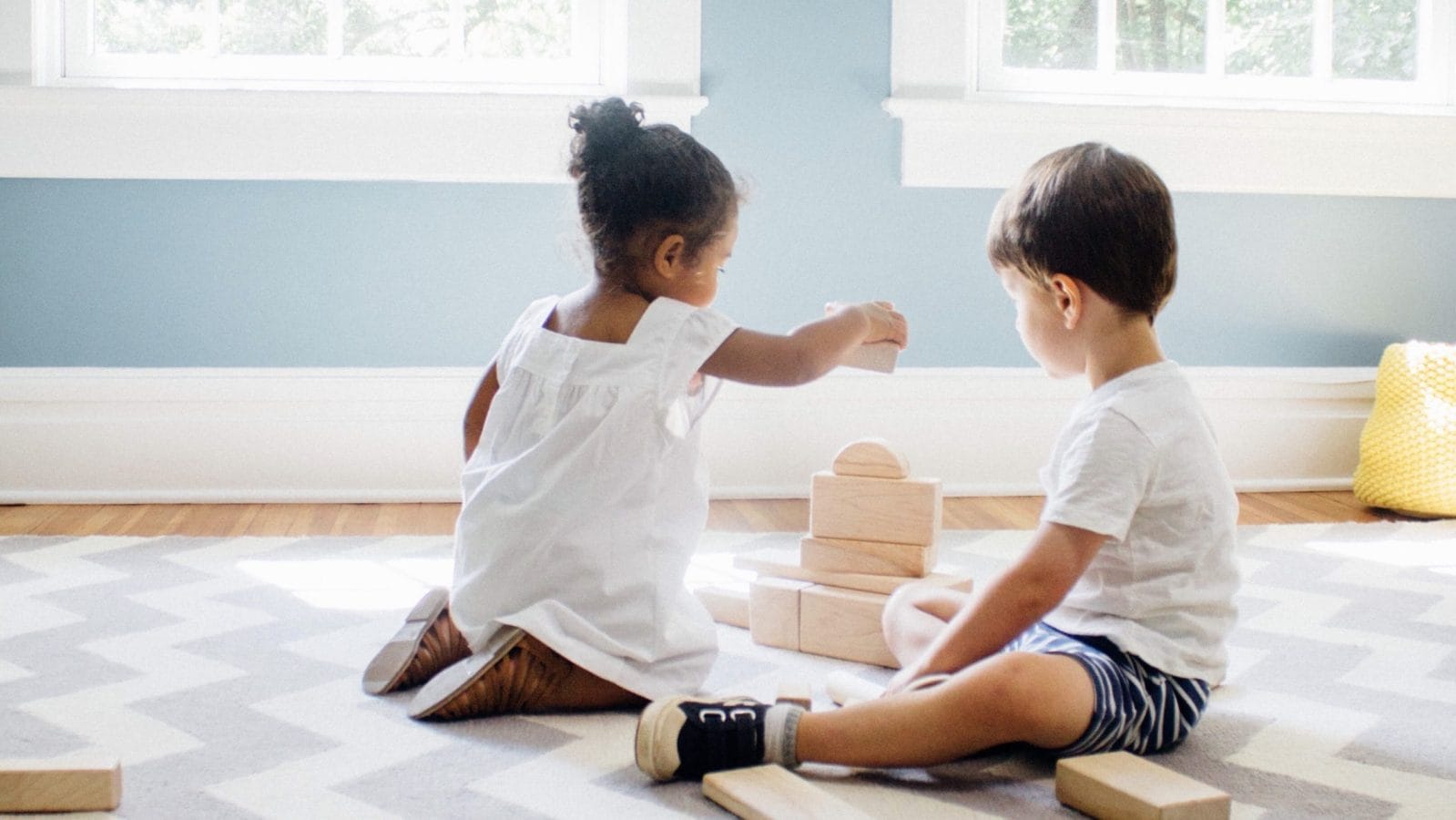Montessori at home: 7 ways to teach your children to be problem-solvers

Try this at home next time you hear the familiar refrain of “I can’t do it!”
Table of Contents
It can be scary to think about, but the truth is we have no idea what the world will look like when our children grow up. But that doesn’t mean we can’t prepare them.
We can help them develop life skills that will serve them no matter what the future holds. One of the best skills you can work with your child on is problem solving.
Children encounter tons of “little” problems each day—each of them a possible moment for exploration and creativity! Remember that though the problems seem little to us, they can be big deals for kids. A puzzle that can’t be solved often elicits that “I CAN’T DO IT!” frustrated cry that we all know well.
1. Name the problem
As a teacher of young children, I’ve often seen children get so upset that they’re in tears, but they can’t tell you why. Sometimes we need to help a child identify the problem before she can see a solution.
For example, a little girl was working with water in the classroom and had a big spill. She burst into tears and threw her scrub brush across the room. In a situation like this, I might say, “You seem upset about that big spill. That’s a lot of water to clean up. What should we do first?”
Naming the specific problem makes it seem smaller and asking a leading question helps her figure out what to do next.
Try this at home next time you hear the familiar refrain of “I can’t do it!” For example, if your child is struggling with his shoes, try, “You can’t get your shoe on because the Velcro is closed. What could we do to make it easier?”
2. Answer with a question
Sometimes it seems like a child asks a thousand questions in a single day. Curiosity is a beautiful thing, but you don’t always have to give the answer. Try throwing a question back at him sometimes instead.
In the classroom, if a child asks why he has to wear shoes on the playground, I might ask him how his bare feet would feel in the gravel. If he asks why he has to stop playing and eat lunch, I might ask how he would feel that afternoon if he didn’t eat anything.
This strategy can work for bigger questions too. If your child comes home upset and asks how to get her best friend to stop being mad at her, help her brainstorm some ideas herself. Ask leading questions and write her answers down to show their importance.
3. Provide resources before answers
More than ever before, we have the answers to many of children’s questions at our fingertips. Why is the sky blue? No problem, let me Google that for you.
But in answering these questions so easily, we may be forgetting to show children how to find their own answers.
If a child at school asked me what lions eat, I would help him find a book about lions rather than just telling him. If you don’t have the necessary resource at home, you could visit the library, or simply involve your child in the research process on the computer.
Instead of quickly Googling on your phone, sit down together and talk to him about what you’re searching for and how you’re choosing a reliable site to read.
4. Set the right level of challenge
At school, we are constantly introducing children to things that are just out of their reach. We want the work to be challenging, but not impossible.
If I give a counting lesson to a child who is ready for addition, she would be bored, but if I give her a lesson on multiplication, she would likely get frustrated and discouraged.
Watch your child and give her opportunities for challenging tasks at home. That might be a puzzle with a few more pieces than she’s used to or buttoning her own jacket. Be there for support, but let her struggle with it too.
5. Embrace open-ended play
In a Montessori classroom, there is a full array of materials designed to allow a child to explore, hypothesize and test his theories, and figure out how the world works.
The truth is, though, you don’t need any special materials at home. All you need is to encourage open-ended play.
Playing with blocks or playing in the backyard offers all of the problem-solving opportunities your child will need. If he wants to build a tower taller than he is and runs out of blocks, what can he use instead? Let him figure it out. If he’s playing super heroes in the backyard and needs a shield, what can he use? Let him figure it out.
This is problem solving in action and the skills he learns in play will transfer over to academic skills.
6. Focus on effort
As a teacher, I would never say, “You got the right answer in all of your equations!” But I might say, “You concentrated on your math for a long time and finished three equations.” Focusing on the child’s effort, rather than results, encourages him to try challenging things.
Try this at home by offering encouragement after your child struggles. If he tries to build a new Lego set and can’t quite do it, you could say something like, “That’s a really tricky one. You worked really hard on that. Maybe we can try again tomorrow.”
7. Slow down and step back
One comment I’ve heard many times as a teacher is, “I didn’t know he could do that, he never does that at home!” This could be referring to putting on his own shoes, packing up his own lunch, or cleaning up spilled juice.
Children do things independently at school because they’re expected to, but also because we don’t jump in to help right away.
I might get a towel and ask a child if he’d like help with a spill, but I would not swoop in and do the whole thing for him, even if he’s upset—that would be robbing him of the sense of accomplishment he’ll feel when he helps solve the problem.
Next time your child is struggling at home, try starting with the minimum amount of support and increase as necessary. The goal is to walk the line between doing everything for a child and letting him get so frustrated he doesn’t want to try.
Try these tricks at home to help your child build his identity as a problem solver. Confidence and the willingness to try go a long way.





































